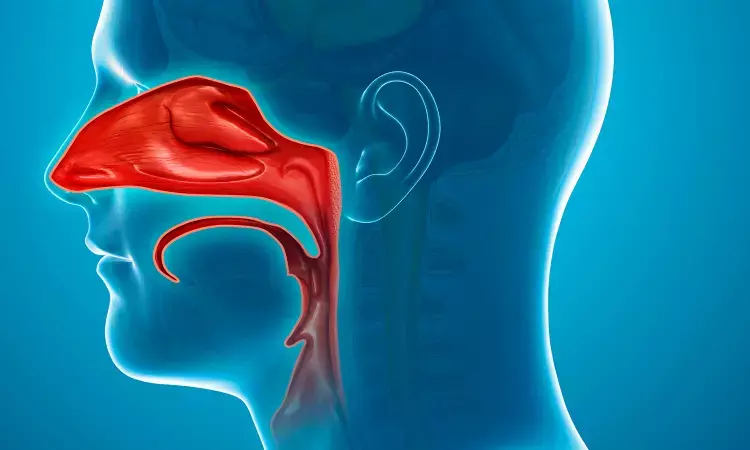- Home
- Medical news & Guidelines
- Anesthesiology
- Cardiology and CTVS
- Critical Care
- Dentistry
- Dermatology
- Diabetes and Endocrinology
- ENT
- Gastroenterology
- Medicine
- Nephrology
- Neurology
- Obstretics-Gynaecology
- Oncology
- Ophthalmology
- Orthopaedics
- Pediatrics-Neonatology
- Psychiatry
- Pulmonology
- Radiology
- Surgery
- Urology
- Laboratory Medicine
- Diet
- Nursing
- Paramedical
- Physiotherapy
- Health news
- Fact Check
- Bone Health Fact Check
- Brain Health Fact Check
- Cancer Related Fact Check
- Child Care Fact Check
- Dental and oral health fact check
- Diabetes and metabolic health fact check
- Diet and Nutrition Fact Check
- Eye and ENT Care Fact Check
- Fitness fact check
- Gut health fact check
- Heart health fact check
- Kidney health fact check
- Medical education fact check
- Men's health fact check
- Respiratory fact check
- Skin and hair care fact check
- Vaccine and Immunization fact check
- Women's health fact check
- AYUSH
- State News
- Andaman and Nicobar Islands
- Andhra Pradesh
- Arunachal Pradesh
- Assam
- Bihar
- Chandigarh
- Chattisgarh
- Dadra and Nagar Haveli
- Daman and Diu
- Delhi
- Goa
- Gujarat
- Haryana
- Himachal Pradesh
- Jammu & Kashmir
- Jharkhand
- Karnataka
- Kerala
- Ladakh
- Lakshadweep
- Madhya Pradesh
- Maharashtra
- Manipur
- Meghalaya
- Mizoram
- Nagaland
- Odisha
- Puducherry
- Punjab
- Rajasthan
- Sikkim
- Tamil Nadu
- Telangana
- Tripura
- Uttar Pradesh
- Uttrakhand
- West Bengal
- Medical Education
- Industry
Temperature-controlled RF treatment effective for nasal obstruction patients with nasal valve collapse

temperature-controlled RF treatment of the nasal valve
Sunnyvale, CA: Nasal valve collapse is a primary cause of nasal obstruction. Patients with nasal airway obstruction suffer from a variety of symptoms that affect quality of life including congestion, headache, sleep problems, daytime sleepiness, and snoring.
A new research, AERWAY study has revealed safety and efficacy of temperature-controlled RF treatment of the nasal valve, VivAer® for treating patients with nasal airway obstruction (NAO) due to nasal valve collapse (NVC). According to the study, nasal obstruction symptom improved at three months following treatment.The AERWAY study adds to a growing body of evidence supporting the safety and efficacy of VivAer.
The study was published in the Journal of Otolaryngology and Rhinology.
"Nasal valve collapse is a common problem for the 20 million Americans suffering from nasal airway obstruction, but treatment options have historically been limited for otolaryngologists (ENT physicians)," said William Yao, M.D., the study's principal investigator from the Department of Otorhinolaryngology - Head and Neck Surgery at McGovern Medical School at The University of Texas Health Science Center at Houston. "For patients who don't respond to medications, temporary aids like breathing strips may not be practical, and traditional surgical procedures in the operating room have had a limited role. The results of this study showed that temperature-controlled radiofrequency energy could be a reliable and effective treatment."
The AERWAY study, a prospective, multi-center single-arm trial, enrolled 122 adult patients with severe or extreme Nasal Obstruction Symptom Evaluation (NOSE) scores, for whom NVC was a primary or significant contributor. Data from the AERWAY study show that patients treated with VivAer experienced significant symptom improvements as well as high rates of satisfaction three months following treatment. Among the study population:
1. A significant improvement of 59% was observed in mean total NOSE scores from baseline to 3 months (a decrease from 80.3 to 32.9, respectively; p<0.001).
2. 91.6% of patients responded to treatment, demonstrating either a 20% improvement in total NOSE score relative to baseline or at least one severity category improvement in their NOSE score.
3. 87.3% of patients treated indicated they would recommend VivAer to a friend.
This study will continue to follow up with the patients through two years to evaluate the durability of the procedure's effects, but the authors noted that three-month results have been shown to be predictive of long-term outcomes in other studies.
NAO can take a heavy toll on daily life. The most common symptoms include nasal congestion or stuffiness, trouble breathing through the nose, trouble sleeping, and difficulty breathing well during exercise or exertion. NVC contributes to nasal obstruction for 73% of highly symptomatic patients,1 but is often under-diagnosed and left untreated. VivAer offers ENT physicians a unique treatment modality that remodels tissue in the nasal valve.
For further information, visit here:
Dr Kamal Kant Kohli-MBBS, DTCD- a chest specialist with more than 30 years of practice and a flair for writing clinical articles, Dr Kamal Kant Kohli joined Medical Dialogues as a Chief Editor of Medical News. Besides writing articles, as an editor, he proofreads and verifies all the medical content published on Medical Dialogues including those coming from journals, studies,medical conferences,guidelines etc. Email: drkohli@medicaldialogues.in. Contact no. 011-43720751


